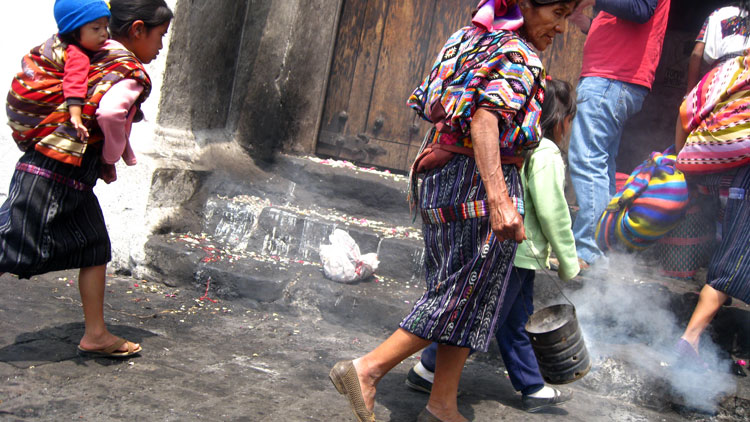About 50% of Guatemala´s population are Mayan, making it the last territorial stronghold of this ancient people since the Spanish conquest. However, beyong the surface, there seems present an undercurrent of deep inequality and pain of the people. Despite the almost forced conversion to Roman Catholicism, the majority of Mayans hold to their ancient believes and rituals, often incorporating them with Catholic rituals.

Chichicastenango´s central Mayan market seems to be a strange almagamation of this hybrid cultures of sorts. The people here are predominantly 100% of Mayan blood — yet, precisely because it is a last bastion of Mayan heritage, the market draws a lot of tourists from the world over. As a result, a strange implicit social contract seems to have emerged: The locals have a love/destain view of the tourist, yet most tourist find a fascination in traditional Mayan culture – almost a livign relic in some ways. To what degree each group is fully aware of this social contract is uncertain. But this much is true, there is not real understanding betweent the two groups; as the Mayans see tourist as a money bag mostly and will tolerate them insomuch as such, but almost every Mayan will not allow their photos to be taken (exactly why I am not sure). In like manner, the tourist´s transaction with the locals are almost strictly materialistic in that they will buy all the traditional textiles and wares made from cheap labor extracted fromt he locals. Yet, because of this strange social contract… an entire sub-economy exists in these Mayan towns.
This aside, the Mayan market is a spectacle for the eyes and really is something that needs to be appreciated up close. The fascinating faces of the locals have a rich history to te; and one can easily see the hardship and sadness hidden behind every smile.
After the market, I hopped on a bus bound for famed lake Atitlan… will report later.
